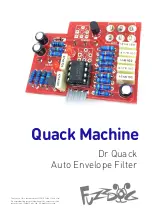
this depth for a few minutes. The water percolates into the sample chamber
displacing the air which bubbles to the surface. When the bubbles cease to rise,
the device has flushed itself approximately five times and it may be raised to the
surface for examination. The inner chamber of the sampling device is lifted out
and portions of the water sample are carefully dispensed for subsequent
chemical analysis.
A Snap-Plunger Water Sampler (LaMotte Code 1077) is another “in-depth”
sampling device which is designed to collect large samples which can be used for
a multitude of tests. Basically, this collection apparatus is a hollow cylinder with
a spring loaded plunger attached to each end. The device is cocked above the
surface of the water and lowered to the desired depth. A weighted messenger is
sent down the calibrated line to trip the closing mechanism and the plungers
seal the sample from mixing with intermediate layers as it is brought to the
surface. A special drain outlet is provided to draw off samples for chemical
analysis.
n
Sampling of Closed System
To obtain representative samples from confined water systems, such as pipe
lines, tanks, vats, filters, water softeners, evaporators and condensers, different
considerations are required because of chemical changes which occur between
the inlet and outlet water. One must have a basic understanding of the type of
chemical changes which occur for the type of equipment used. Also,
consideration should be given to the rate of passage and retaining time for the
process water.
Temperature changes play an important part in deciding exactly what test
should be performed. Process water should be allowed to come to room
temperature, 20–25°C, before conducting any tests.
When drawing off samples from an outlet pipe such as a tap, allow sample to run
for several minutes, rinsing the container several times before taking the final
sample. Avoid splashing and introduction of any contaminating material.
n
FILTRATION
When testing natural waters that contain significant turbidity due to suspended
solids and algae, filtration is an option. Reagent systems, whether EPA, Standard
Methods, LaMotte or any others, will generally only determine dissolved
constituents. Both EPA and Standard Methods suggest filtration through a 0.45
micron filter membrane, to remove turbidity, for the determination of dissolved
constituents.** To test for total constituents, organically bound and suspended
or colloidal materials, a rigorous high temperature acid digestion is necessary.
**LaMotte offers a filtering apparatus: syringe assembly (Code 1050) and
membrane filters, 0.45 micron, (Code 1103).
SMART SPECTRO SPECTROPHOTOMETER 05.04
11












































